Last week we had the pleasure of having Maple Ridge Times journalist Maria Rantanen visit our farm to interview us about our farming project. She published her story, ‘Young family yearns to work the land’ today and we love it! Thanks Maria for sharing our story so well and for capturing some great photos of the farm family for us. I’ve reprinted the story and photos here for our records, but the originals can be read and seen online at www.mrtimes.com. All photos above were taken by Maria Rantanen.
Young family yearns to work the land
The Clark-Moermans are experimenting with farming on a two-and-a-half acre property in east Maple Ridge
By Maria Rantanen, Postmedia Network Inc. August 10, 2011
The grass is cut but not raked on the Moerman-Clark property in east Maple Ridge.
This is not laziness, insisted Julie Clark, at least that’s what her husband Chris Moerman told her.
It’s part of the philosophy that the couple, and Moerman’s brother’s family and their friend Jocelyn Durston – who all live on the small, organic farm in Maple Ridge – are trying to promote: learning to be farmers in a sustainable, natural way, espousing such ideas as permaculture.
Permaculture doesn’t make for a nicely manicured lawn, Moerman said, and the grass clippings on the lawn will eventually break down and become a part of the soil providing needed nutrients.
“Basically any biomass that can be left [where it is] will put those nutrients back in the soil,” Moerman said.
It’s been a year since the five adults – and two babies, now toddlers – started their intensive, but largely experimental farming project.
On their farm, they have raspberries – left over from Moerman’s parents’ days on the property – blueberries, kale, turnips, scallions, garlic, Yukon gold potatoes, corn, beans, and other vegetables they expect to be eating over the next few months.
They also have small livestock on the property: chickens and six pigs, four of which belong to a 4-H club, and two which they’ll keep.
They also had 12 rabbits, six of which were processed on Aug. 3 – a polite way of saying they were being butchered, Clark said.
The topic of the rabbits is a touchy one, Clark said, as everyone grew to like them, and she didn’t know how comfortable she’d be having them butchered and eating them.
“It’s just not nice to kill bunnies,” she said sheepishly a day before they were to be processed.
Clark thinks the family can feed themselves “fairly decently” in season, but after doing the calculations, she said none of them would be able to earn a living off the land.
But growing one’s own food is very “empowering,” Clark said, adding that “when you sit down and say ‘we produced [this]’, it’s very satsifying.”
Farming for substinance is a lifestyle, Clark said, and they want it to be a joy.
It’s also about making ethical choices for the health of the planet, Moerman said.
Clark admits they are no experts at farming and they’ve had to consult Google and YouTube to figure out all sorts of farming techniques and practices.
But they want to get back to the land and reconnect with where their food comes from and learn to produce as much themselves as they can, something their generation is talking a lot about.
Moerman took an organic master gardener course at the CEED (Community Education on Environment
and Development) Centre in Maple Ridge, and a Kwantlen Polytechnic University course about sustainable communities.
Moerman said they know they will have failures in this “big experiment” in agriculture they’re undertaking.
Small-lot farming is the most productive type of farming in the world, according to Christian Cowley, executive director of the CEED Centre.
One of the goals of the agricultural plan of Maple Ridge, developed by the agricultural advisory commitee which Cowley belongs to, is to facilitate small-lot farming on one to 20 acres lots, because that fits the profile of many of the remaining farms in Maple Ridge, Cowley said.
“The big story is there’s so much unused potential [in Maple Ridge],” Cowley said.
Small-lot farming could provide a secondary source of income for their owners or food in an emergency, he added.
Clark’s friend Jocelyn Durston moved onto the property a year ago this month hoping to turn some theories on urban agriculture into practice.
Durston had recently finished a master’s degree in urban agriculture, studying the sustainability of producing food in an urban setting with a focus on how Cuba has been successful at it.
After several years of theoretical work, Durston was looking to get her hands dirty.
She has been blogging about her experience on the farm on a website called Farm for a Year.
“It would not be an exaggeration to say I learn something everyday,” Durston said. “The learning curve has been huge.”
Working with her hands in the dirt has been satisfying and healthy, Durston said, and it has solidified the theoretical work she did before, and the ideas she had about agriculture.
“I feel certainly more convinced of the ability of anyone to grow part of their own food,” she said.
Durston brought enthusiasm to the project, Clark said, and without it, they wouldn’t have gotten as far as they did.
“It was the kick in the butt to do it,” she said of Durston’s enthusiasm.
As they planned their farming experiment – which is a long-term plan for the Moerman-Clark family – they tried to follow the principles of permaculture: following the rules of nature as one grows food for consumption.
Weeds are allowed to grow around other plants as they retain the soil integrity. This respects the natural balance that exists in the ecosystem.
“It doesn’t look as pretty… but the idea is it’s all working in harmony,” Clark said.
Their fruit trees have comfrey planted around them (“Some call it a weed,” Moerman said,) which provides nutrients, shades the area around to keep water from evaporating, and whose flowers attract beneficial insects and bees.
“The idea is biodiversity so that if one part of the system fails, there’s another part that picks up the slack,” Moerman said.
The family tried to do a combination of corn, beans, and squash, which are companion plants, but the corn was planted too late, Clark figured.
The beans are meant to grow around the cornstalks but because the latter is too short, it didn’t work this year.
Another lesson learned. Part of the philosophy is to observe why things are happening in nature the way they are.
For example, nasturtiums attract aphids, so planted beside a garden, the flowers will keep the pesky bugs away from the other plants.
Kai, Clark’s and Moerman’s 20-month old son wanders around the garden picking vegetables to eat, prompting Clark to point out that their farm is “amazing to bring your kids up in,” Clark said.
“Often I’ll think this is what life is about,” she said of their life on the property. “We have a lot of coffee and wine time.”
Clark’s husband grew up on the property, and when his parents were planning to sell, he and the brothers decided to buy it and split the house in half.
Everyone brings their own skills, talents, and interests to the farming project, Clark said, and each person’s abilities seem to complement those of the others.
Chris Moerman is more the big-picture, visionary, while his brother Matt has a lot of hands-on skills to improve the property.
The plan for Durston, who does a lot of the day-to-day chores on the property, was to stay for a year, but she laughed and said, “I love it and they aren’t sick of me yet.”
The five adults living on the property have strong relationships, Clark said, and that’s part of the reason they’ve been successful. It’s a lifestyle choice, she said, but everyone reaps the payoffs and benefits.
It also allows for a broader idea of family – “family is what you make it,” Clark said.
“Even if we won the lottery… I’d still choose to do this because it’s so tied in to my values,” Clark said.
Originally published in the Maple Ridge Times.
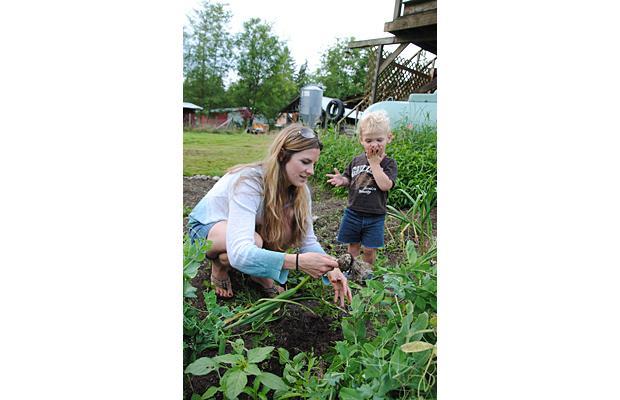
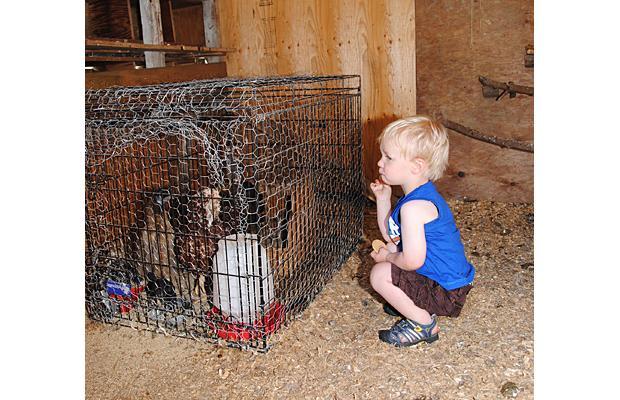
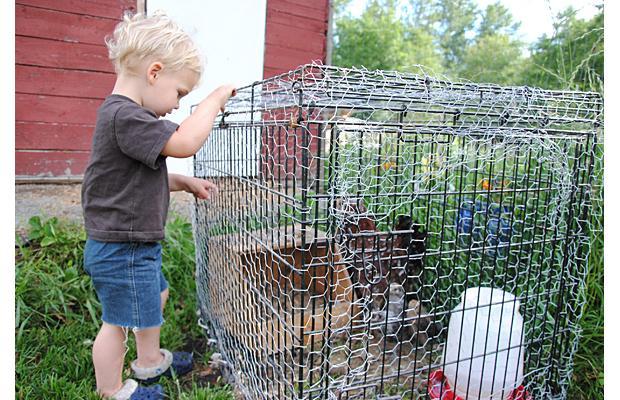
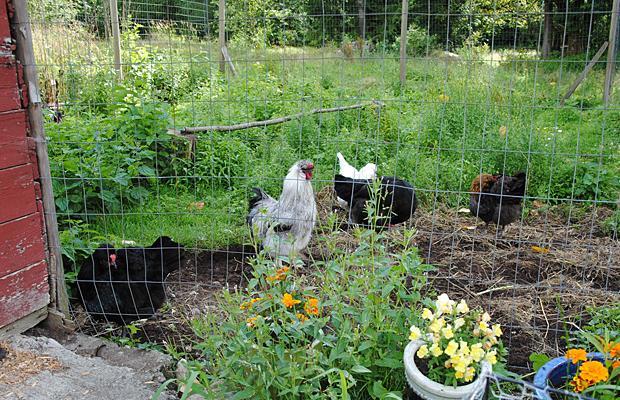
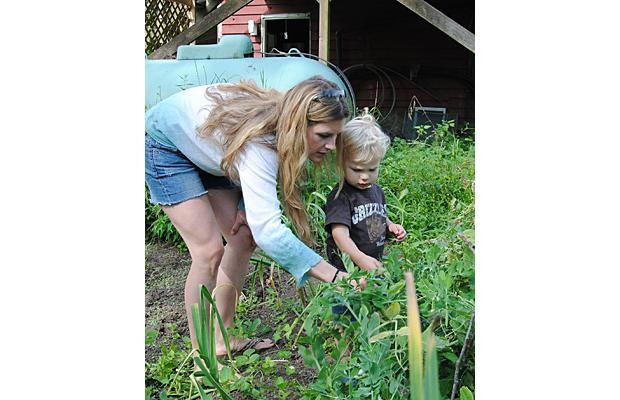
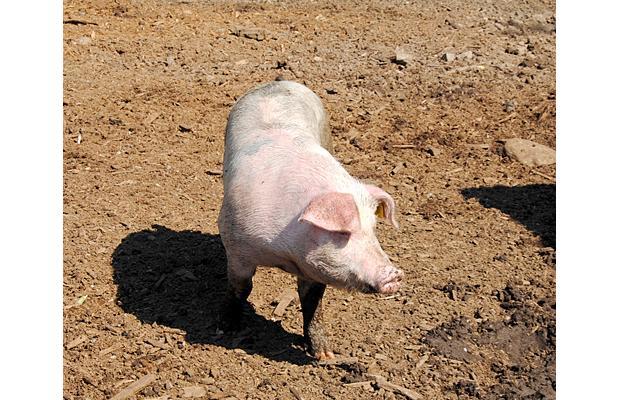
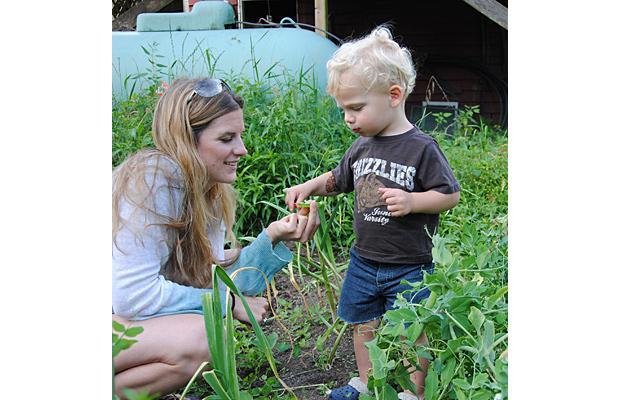
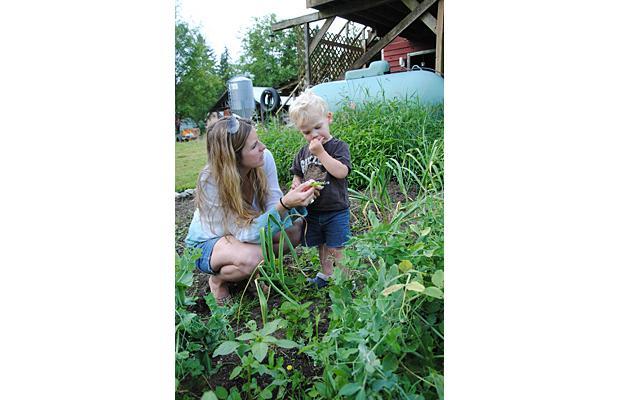
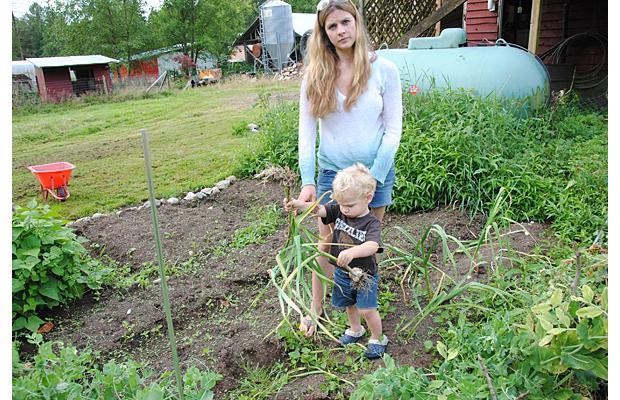
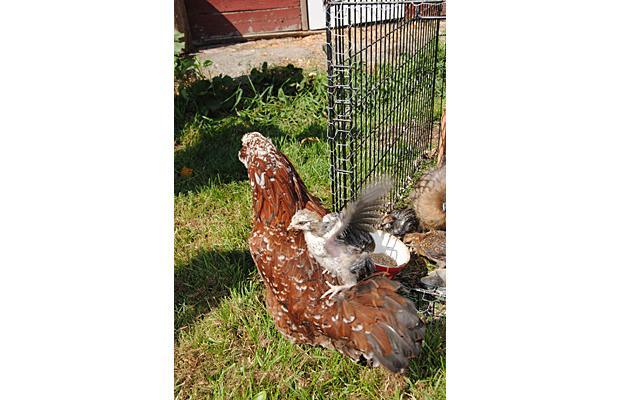
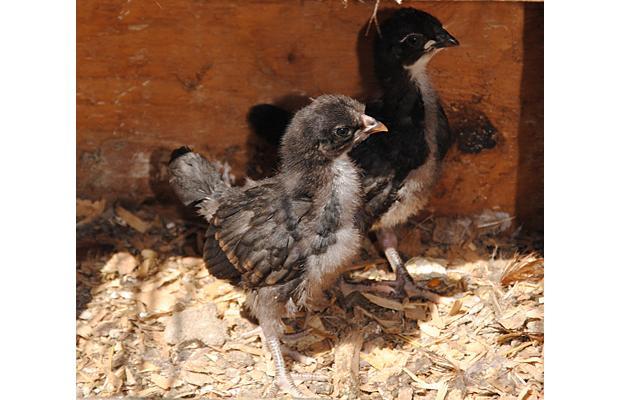
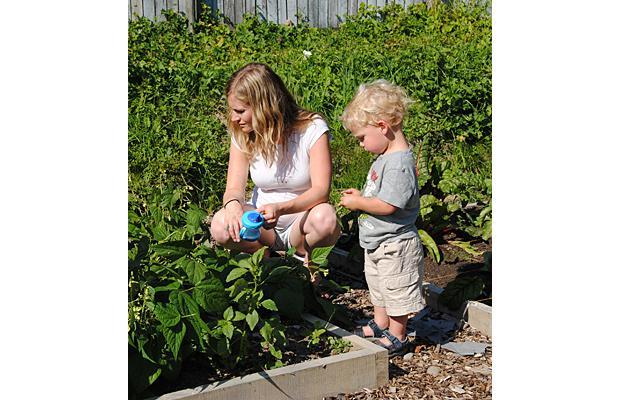
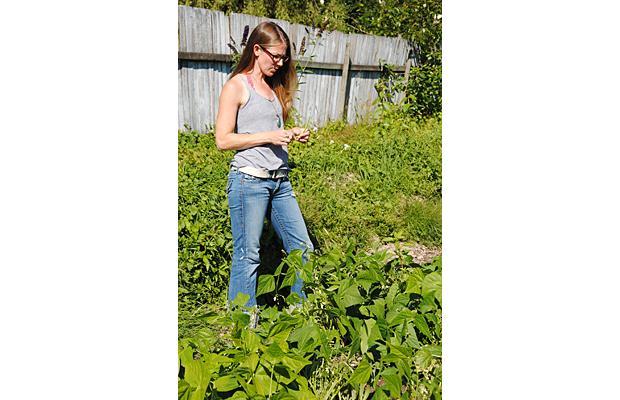
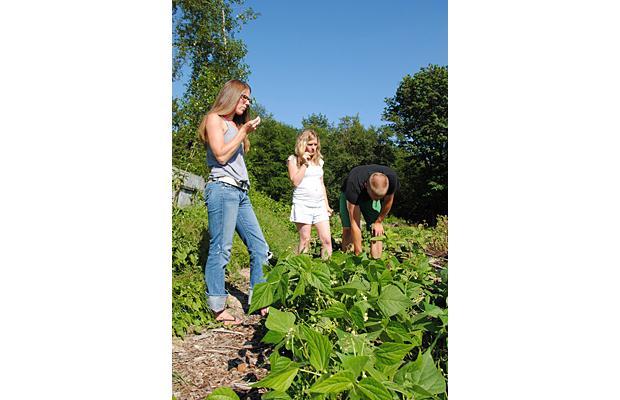
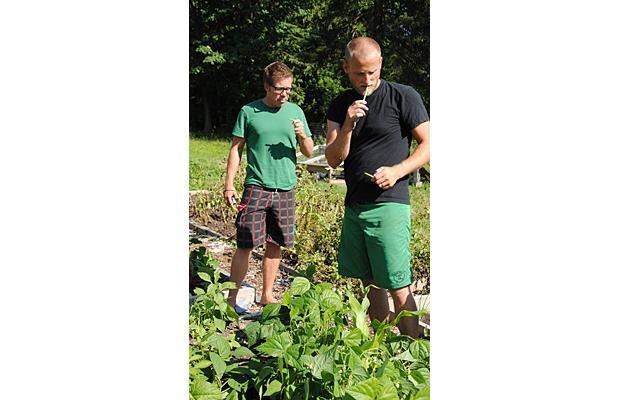
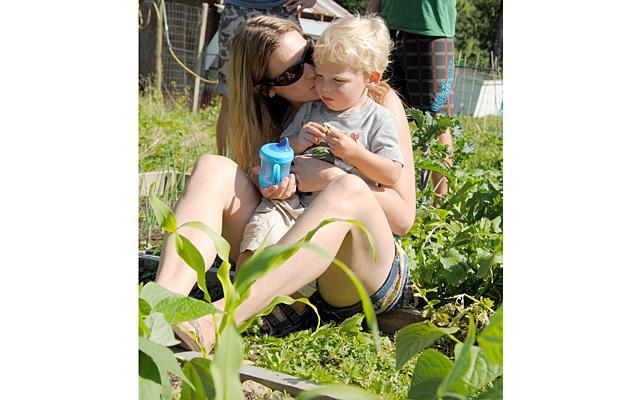
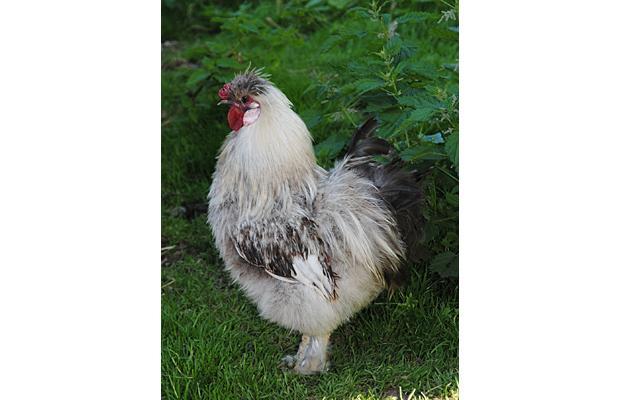
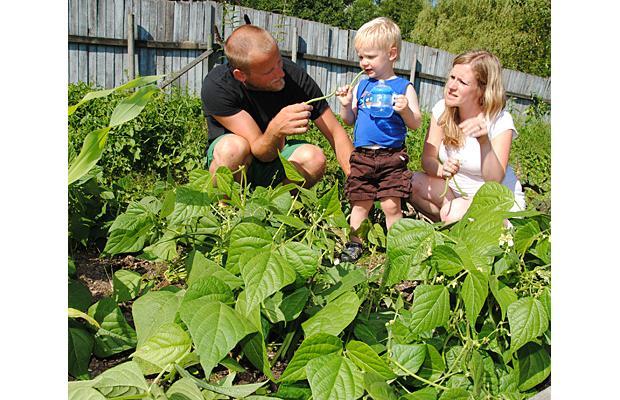
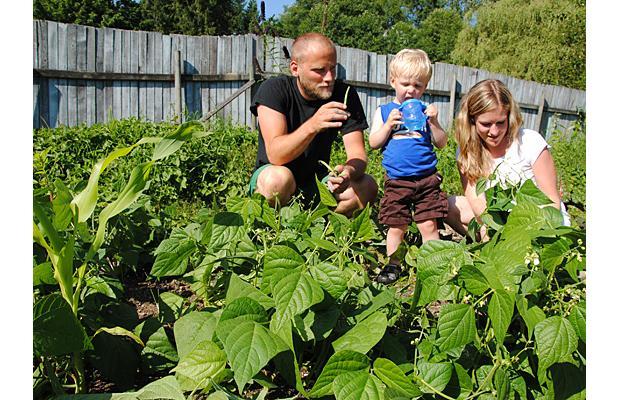
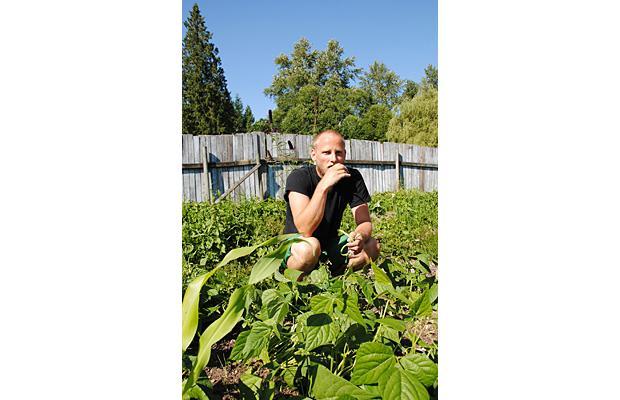
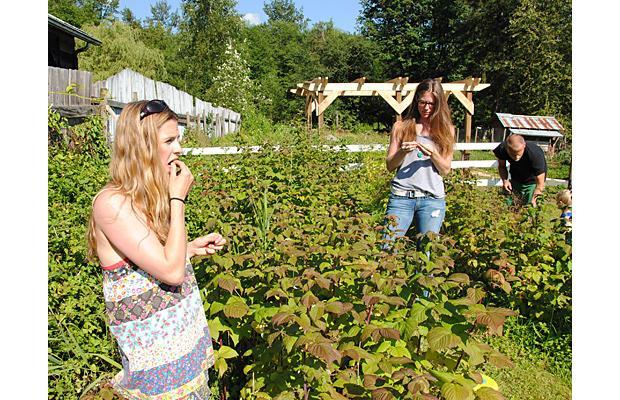
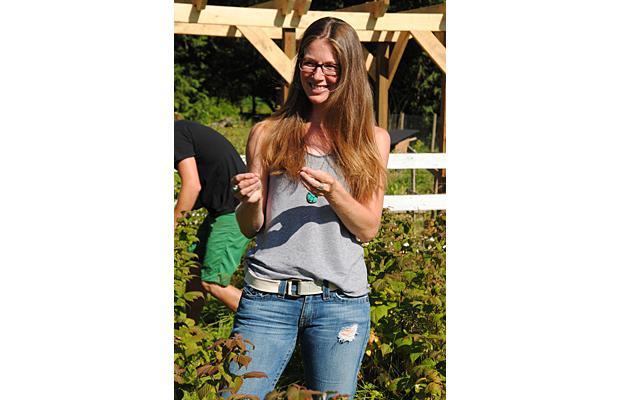
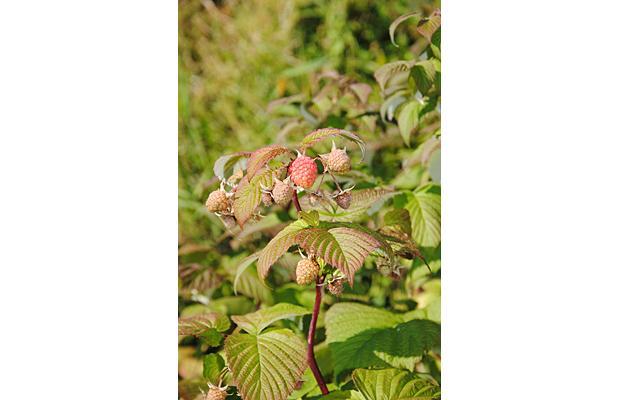
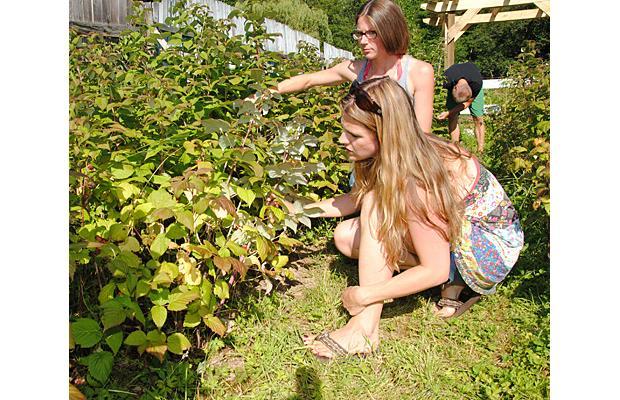
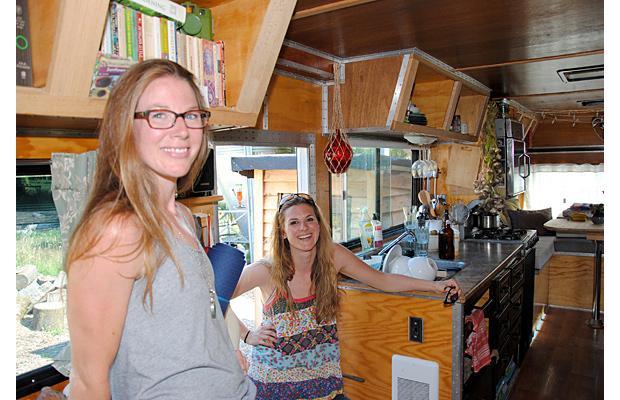
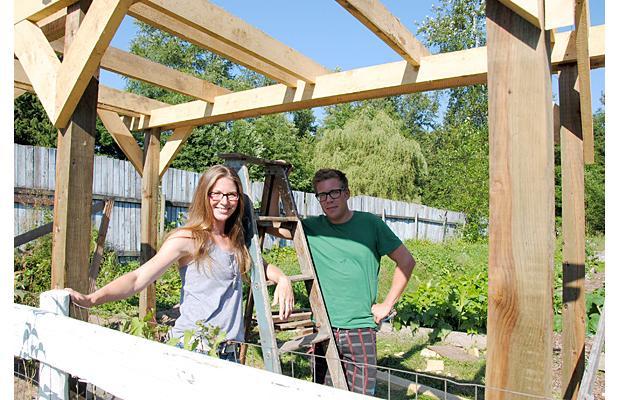
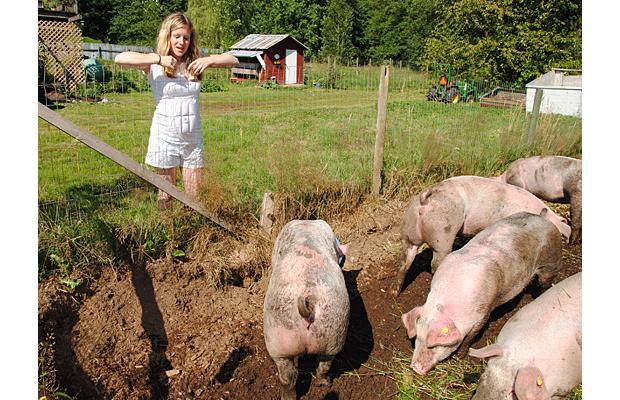
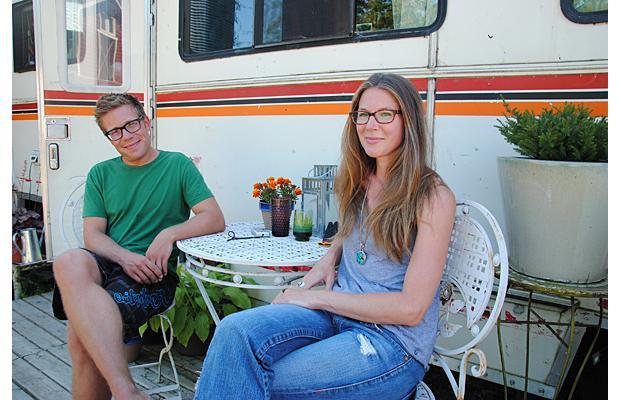
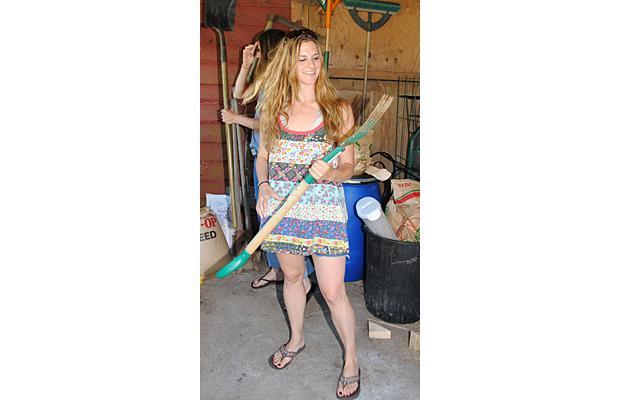
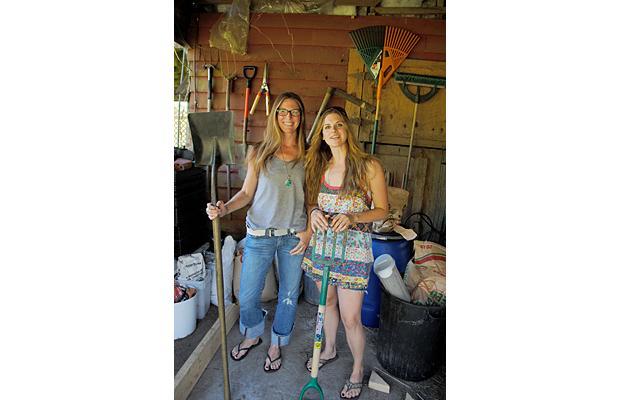
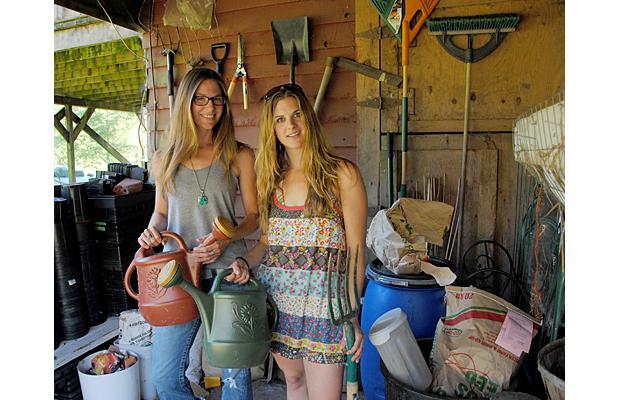
Wow, I loved the photos and the article. It’s time we made it out to see you again. The garden is so lush and it is good to see everyone enjoying the fruits of their labors. The chickens look great, especially the babies. Good to see Chantelle enjoying a little sunshine. Congratulations on the success of your first year farm family.